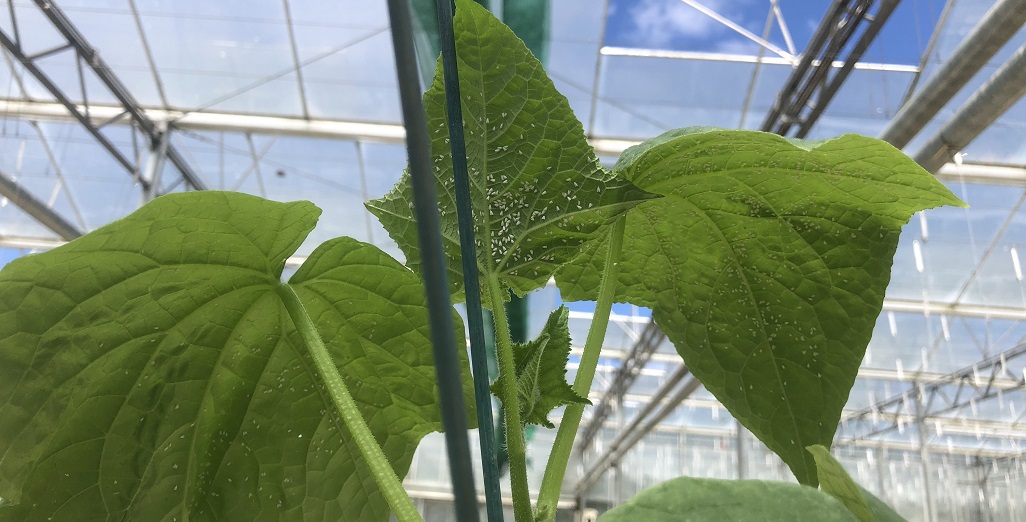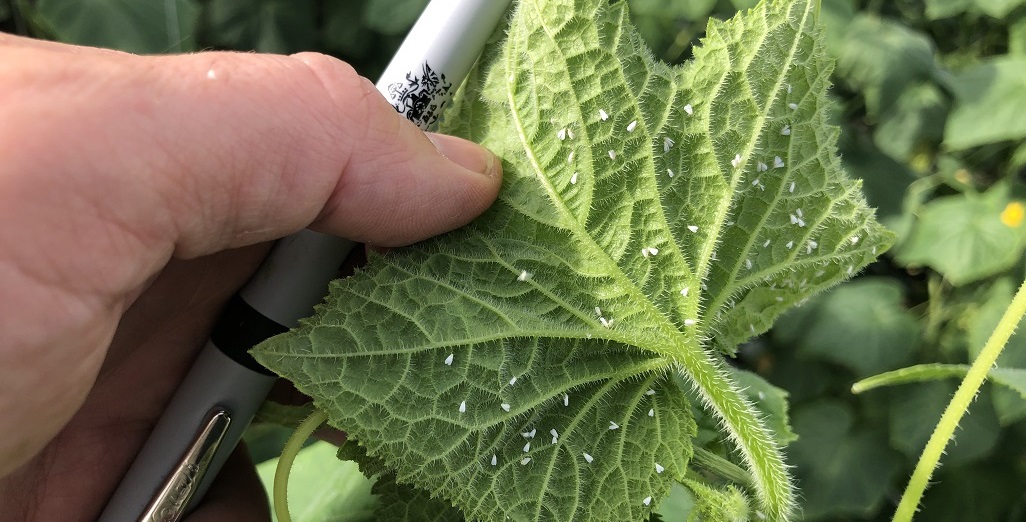Sign up here to subscribe to the Grower2grower Ezine. Every two weeks you will receive new articles, specific to the protected cropping industry, informing you of industry news and events straight to your inbox.
Feb 2019
Hot period sparks large populations of Thrips

Zonda Beneficial’s helps to control this damaging pest
Over the past two week’s I have witnessed a large influx of thrips into tomato and cucumbers. The conditions have been perfect, with the hot dry temperatures, and other factors out of the control of indoor growers. The area I have witnessed the highest levels is in the South Auckland region and close to crops that thrips thrive upon. I would be interested to know if it has been a problem nation-wide.
The crops severely affected from thrips are more so cucumbers, tomato, capsicum, and eggplant as well as flower crops. Spraying is a very valuable tool to control thrips, but even this seems to be proving difficult, as huge outdoor populations appear to be coming inside with the next gust of wind! Spraying multiple times during a seven-day period is tricky.
The main consideration is the damage to the leaf with the different types of products available. Yes, you can control the thrips but at what cost to the plant’s health. In the end the grower will make these tough decisions as doing nothing is simply not an option. If you have been recommended biological sprays then you should consider using this in conjunction with beneficial product such as Thripex, supplied by Zonda Beneficial’s. The Thripex products consist of predatory mite- Amblyseius cucumeris and are now available to growers.
It is recommended that Thripex be started in young crops to build a good population. Zonda is able to provide information on what “soft” chemicals can be used in combination with Thripex.
If you want a biological solution to the thrips, contact Zonda Beneficial Ltd. Located at 79 Taurangaruru Road, Waiuku, South Auckland (Ph. – 0800 4 ZONDA 96632; Email- zonda@zonda.net.nz, website- www.zonda.net.nz)
Their R& D team, led by Dr. Gunjan Gera (gunjan@nzg.co.nz), is focussed on developing sustainable and holistic methods for the pest control in horticulture using the beneficial bugs. They can provide you a catered plan suitable to your crop for the biological pest management for Thrips and the other pests.

Using Amblyseius cucumeris, could just be the answer to try and get you through the next month.
Biology: (courtesy of Zonda Beneficials Ltd.)
Thrips go through six stages, namely egg, two larval stages, pre-pupal and pupal stage and finally the adult stage. Adult thrips are found in flowers and on leaves where they deposit their eggs. On sweet pepper leaves the egg laying sites are easily recognized as wart-like deformations; in cucumber and other crops these deformations are not visible. The larvae feed on all above ground parts of the plant and are extremely mobile. Pupation takes place on the ground.
Symptoms:
Thrips cause damage to the plant by piercing and sucking out cells on the leaf surface. This causes silver-grey spots on the leaves, with dark green spots (excretions) and reduces the production of the plant. At high infection levels leaves may even wither.
The most important virus transmitted by thrips is tomato spotted wilt virus (TSWV). Frankliniella occidentalis is the mayor vector of this virus which causes a lot of damage in the Mediterranean countries.
Solutions:
THRIPEX – Amblyseius cucumeris in bran
THRIPEX-PLUS – Amblyseius cucumeris in sachets
THRIPEX-V – Amblyseius cucumeris in vermiculite
Thrips found in the flowers of cucumber plants will cause the fruit to misshapen and bend, this then makes them second grade. Blow on the flower if you unsure if you have thrips, they will quickly move and become visible.
I appreciate your comments. Please feel free to comment below or on the grower2grower Facebook page:
https://www.facebook.com/StefanGrower2grower/
Article Written by Stefan Vogrincic, Consultant, Grower2Grower
Article Edited by Marie Vogrincic, Editor, Grower2Grower
CLASSIFIED
Subscribe to our E-Zine
More
From This Category

Starting on the back foot

(Best of 2023) RNA-based disease control in protected cropping environments. Anne Sawyer presents at the PCA Conference (Best new development PCA 2023)

(Best of 2023) Aphid infestation on cucumber crops

LimoMax, a new predator for insect control in greenhouses and outdoor crops.

Aphid infestation on cucumber crops

























